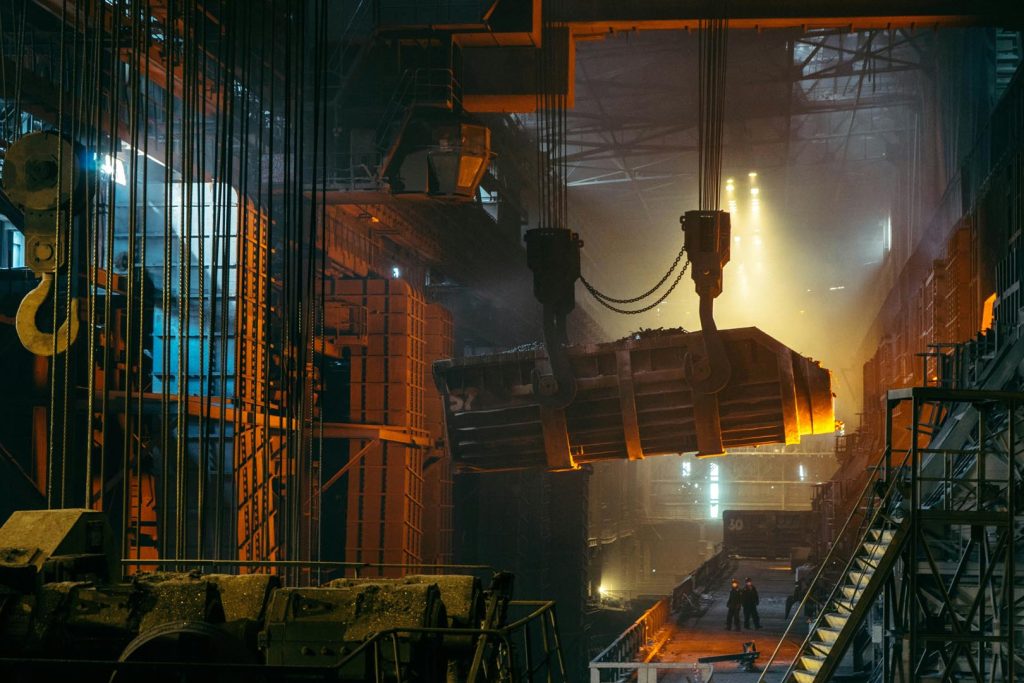Steel
Steel
Improving results in a steel manufacturing company involves projects aimed at enhancing operationalefficiency, product quality, sustainability, and cost-effectiveness. Here are some project ideas tailored to the steel manufacturing industry:

1. Process Optimization and Efficiency Improvement
- Advanced Process Control (APC): Implement advanced process control technologies to optimize process parameters, reduce energy consumption, and improve yield and quality in steel production.
- Lean Manufacturing Initiatives: Apply lean manufacturing principles to streamline production processes, eliminate waste, and enhance overall operational efficiency in steel manufacturing plants.
- Energy Management Programs: Develop energy management programs to optimize energy usage, reduce carbon emissions, and lower production costs through energy-efficient technologies and practices.
2. Quality Assurance and Product Development
- Quality Management Systems (QMS): Establish robust quality management systems to ensure product quality consistency, adherence to specifications, and compliance with industry standards and customer requirements.
- Continuous Improvement Projects: Implement continuous improvement projects to address root causes of quality issues, enhance product performance, and meet customer expectations for steel products.
- New Product Development: Invest in research and development (R&D) to develop innovative steel grades, formulations, and applications that meet evolving market
demands and customer needs.
3. Raw Material Sourcing and Supply Chain Optimization
- Supplier Collaboration and Raw Material Sourcing: Strengthen relationships with suppliers and optimize raw material sourcing strategies to ensure a reliable supply of high-quality raw materials, such as iron ore, coal, and scrap metal.
- Supply Chain Visibility and Collaboration: Improve supply chain visibility and collaboration with suppliers, logistics partners, and customers to optimize inventory management, reduce lead times, and minimize supply chain risks.
- Integrated Steel Production Planning: Develop integrated production planning processes that align steel production schedules with raw material availability, customer demand, and market dynamics.

4. Sustainability and Environmental Stewardship
- Emissions Reduction Technologies: Invest in emissions reduction technologies and pollution control measures to minimize air and water pollution, comply with environmental regulations, and enhance sustainability performance.
- Waste Management and Recycling Programs: Implement waste management and recycling programs to reduce waste generation, recycle by-products and scrap materials, and minimize landfill disposal in steel manufacturing operations.
- Resource Efficiency and Circular Economy Initiatives: Optimize resource utilization, promote resource efficiency, and adopt circular economy principles to minimize resource consumption, conserve energy, and reduce environmental impact in steel production.

5. Technological Innovation and Digital Transformation
- Industry 4.0 Integration: Embrace Industry 4.0 technologies such as Internet of Things (IoT), artificial intelligence (AI), and big data analytics to digitize and optimize manufacturing processes, improve predictive maintenance, and enhance production efficiency.
- Smart Manufacturing Solutions: Deploy smart manufacturing solutions such as digital twins, predictive analytics, and real-time monitoring systems to optimize equipment performance, reduce downtime, and improve overall equipment effectiveness (OEE).
- Automation and Robotics: Invest in automation and robotics technologies to automate repetitive tasks, increase production throughput, and enhance worker safety in steel manufacturing plants.
6. Occupational Health and Safety Initiatives
- Safety Culture Enhancement: Foster a culture of safety among employees through safety training programs, hazard identification, and near-miss reporting systems, promoting a safe working environment and reducing workplace accidents.
- Ergonomics and Workstation Design: Implement ergonomic principles and workstation design improvements to reduce ergonomic risk factors, prevent musculoskeletal injuries, and enhance worker comfort and productivity.
- Chemical Handling and Hazard Communication: Provide comprehensive training on chemical handling, storage, and hazard communication to ensure employee awareness of safety protocols and regulatory compliance requirements.
7. Market Expansion and Product Differentiation
- Market Diversification Strategies: Explore new market segments, geographic regions, or industries for steel product applications, diversifying revenue streams and reducing dependency on specific market sectors.
- Value-Added Product Offerings: Develop value-added steel products with unique features, properties, or coatings that meet specialized customer requirements, command premium pricing, and differentiate from competitors.
- Customization and Tailored Solutions: Offer customization options and tailored solutions to meet specific customer needs, enhance customer satisfaction, and build long-term customer relationships.
8. Talent Development and Workforce Training
- Skills Training and Development Programs: Invest in workforce training and development programs to enhance technical skills, leadership capabilities, and problem-solving abilities among employees in steel manufacturing operations.
- Cross-Training and Multi-Skilling: Implement cross-training and multi-skilling initiatives to increase workforce flexibility, agility, and adaptability in response to changing production demands and business requirements.
- Knowledge Transfer and Succession Planning: Develop knowledge transfer mechanisms and succession planning strategies to capture and transfer critical knowledge and expertise from experienced employees to younger generations, ensuring continuity and competency development within the organization.
By implementing these projects, steel manufacturing companies can improve operational efficiency, product quality, sustainability performance, and competitiveness in the global steel industry, driving long-term growth and success.